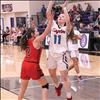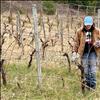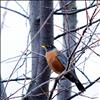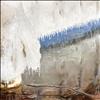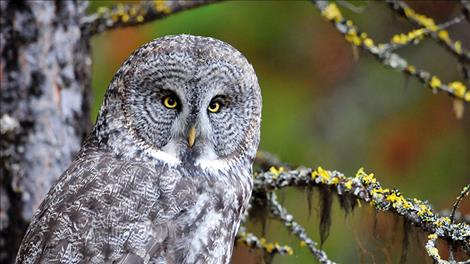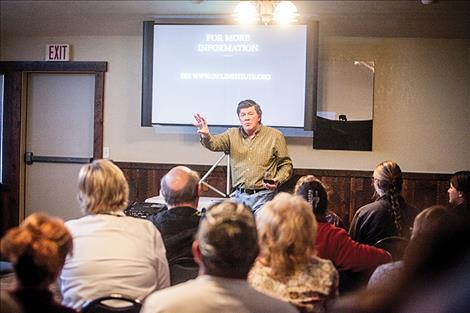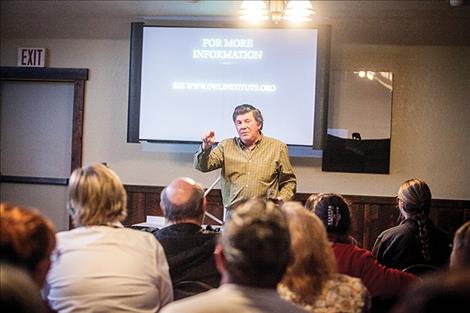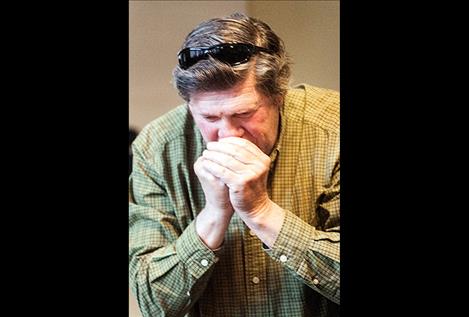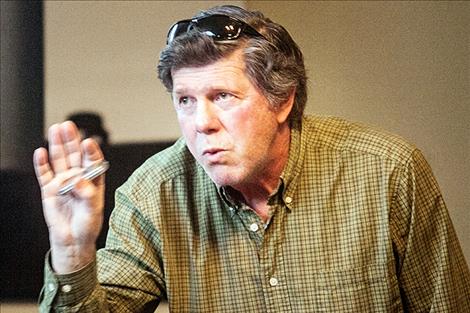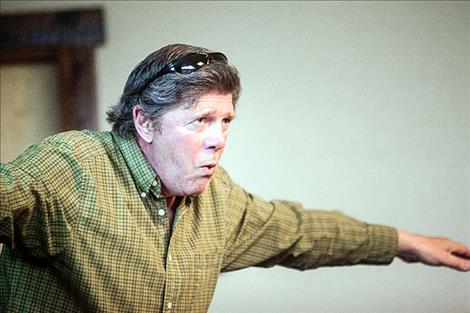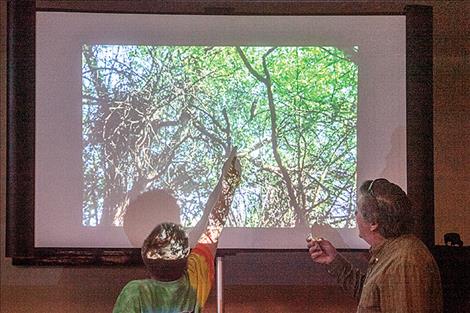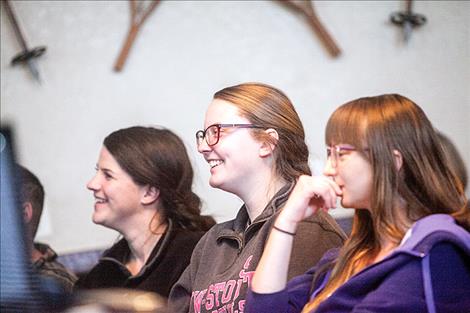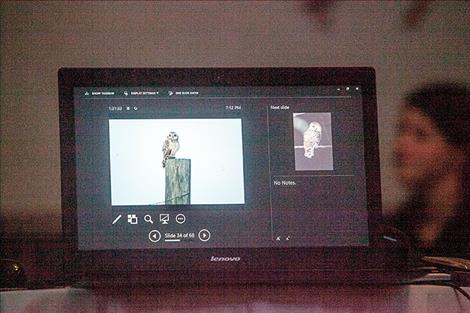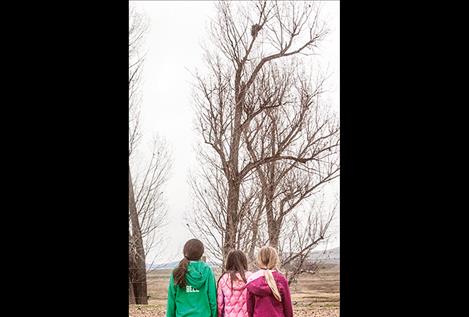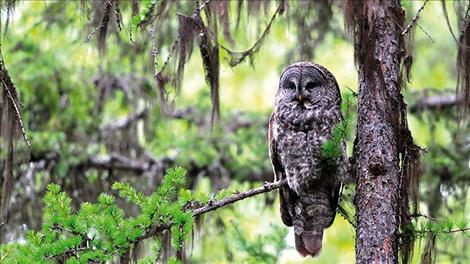Whoooo goes there?
Owl Research Institute seeks observations from public
Hey savvy news reader! Thanks for choosing local.
You are now reading
1 of 3 free articles.
Owl Research Institute seeks observations from public
CHARLO – If you’ve seen a pair of big round eyes, maybe a set of ear tufts, and a head seemingly twist around, owl expert Denver Holt wants to hear about it.
“We really need help from the public including farmers and ranchers that might see owls on their property,” he said.
Holt would appreciate a call into the Owl Research Institute located on the back roads in Charlo if anyone locates an owl or a nest. The number to call is 406-644-3412.
The information collected at the institute is used to research owl numbers, habitats and behaviors. Long-term research is being done on the owls, their prey species and relationship to habitat for education purposes.
“This won’t result in public lands being locked up,” he said. “It’s nothing to do with endangered species. We just want to find out where the owls are and how many we have here.”
The nonprofit ORI is funded with grants, donations and some agency contracts. Three full-time employees and volunteers help with the work, but they need more eyes out in the field.
“We’ve had people call in and say they heard an owl, and it sounds like a truck backing up: beep … beep … beep. Other people call in and say they’ve seen a nest. Whatever they see or hear, we’d like to know about it. We really depend on people calling in,” he said.
Holt is looking for all kinds of owls, but he is especially interested in finding barn owls and great gray owls. Identifying the nesting trees for the great gray owl is one of the institute’s main research objectives. This species often uses dead broken-topped trees.
On March 21, Holt was at the Ninepipes Lodge to share information about local owl species with the public. The Lake County Conservation District hosted the presentation as part of a series of public engagement events. More events can be found at lakecountyconservation.org.
Holt shared the short version of his story about how he got started with owl research. It began as he was studying biology at the University of Montana. He got an opportunity to go visit an owl nest, which was interesting. Later, he found out owl research was sparse in the world, so he decided to change that. He started studying everything about owls, wrote research papers, and eventually started the research institute at Charlo in 1988.
Holt has observed owls locally and all over the world. His work was featured in National Geographic and other publications. He says 270 species of owls are on the planet. Fifteen of those owl species make their home in Montana including the long-eared owl, great horned owl, northern saw-whet owl, boreal owl, burrowing owl, short-eared owl, barred owl, great gray owl, northern pygmy owl, northern hawk owl, common barn owl, snowy owl, eastern screech owl, western screech owl, and the flammulated owl.
He asked the group: “Owls, who are they?” with a slightly elongated “hoo” sound on the question. He said owls are mostly nocturnal with large heads and large eyes. Each species has a few different characteristics. For one, the sounds they make are different.
The larger owls often make a hooting sound while the smaller ones have a tooting call. He demonstrated the sounds with such a realistic quality that it sounded as if real owls might be in the room.
Holt also shared photos of different owl species hidden in trees and asked if anyone could find them in the photos. He said people often walk right by an owl and don’t even notice them camouflaged against a tree. The white snowy owl is also adept at staying hidden.
He offered a few tips to help identify the different owl species. First, it’s a good idea to identify some basic characteristics. Look to see if the head is rounded or has ear tufts. Make a note of the eye color and any other distinctive markings. The size of the owl is important. Finally, look at the owl’s habitat. With these details, figuring out the species can be easier with field guides or a call to the institute.
The institute has cameras set up to record owls and their nesting behaviors for the public to view at www.explore.org. The species of these owl are clearly labeled on the website. One of the cameras shows a great horned owl pair, Charlie and Charlotte, nesting in the treetops in Charlo.
The next big project on the horizon is a three-year study of short-eared owl populations in the western United States. This project involves a cooperative study between 15 agencies and eight states.
The U.S. Fish and Wildlife Service funded a grant for the study.
Institute members note that the project is a rare example of cooperation and collaboration on a large scale. The methods used for the large-scale monitoring study stem from a paper published by Charlo’s Owl Research Institute.
“The effort aims to complete a number of coordinated surveys across California, Idaho, Montana, Nevada, Oregon, Utah, Washington and Wyoming,” the institute states. “The survey design is well-suited to volunteer participation and will rely primarily on volunteer, citizen scientists to collect data.” If you are interested in learning more about this project, contact Matt Larson at owlinstitute@outlook.com.










